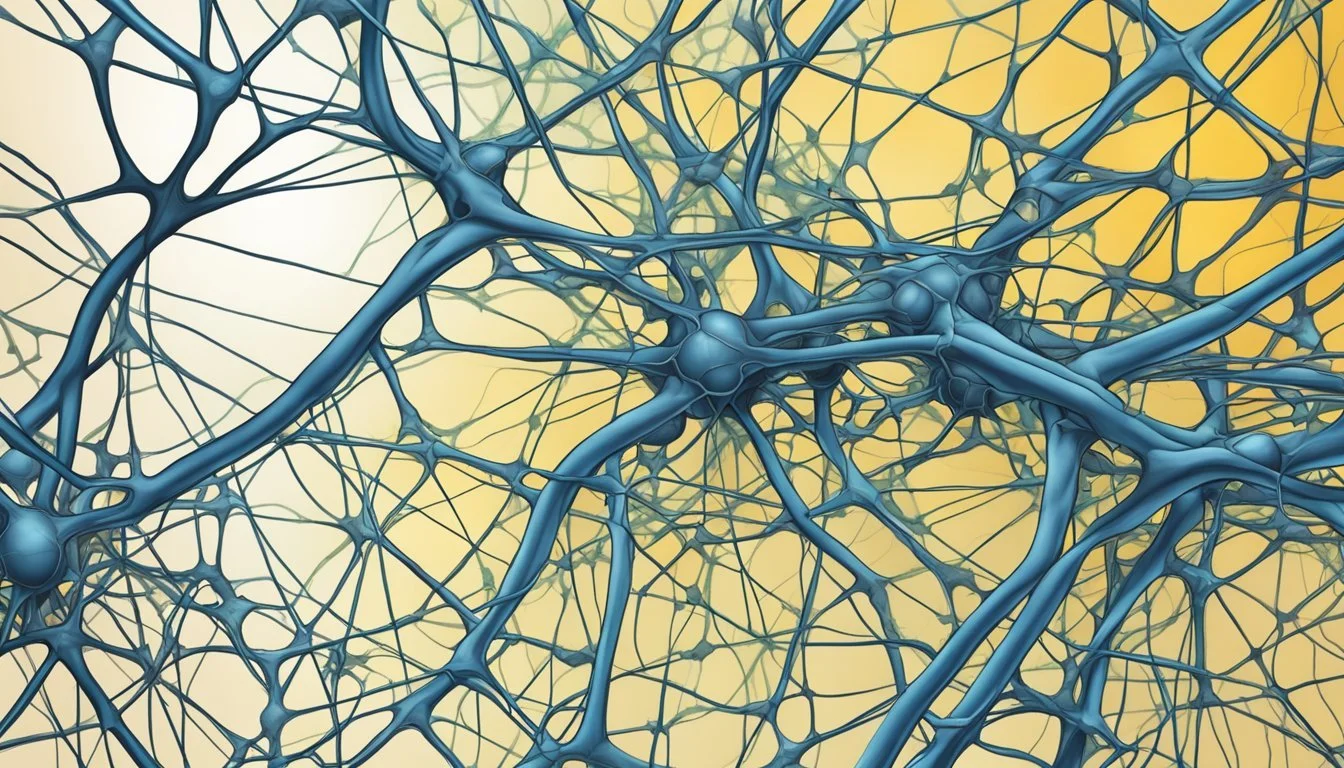Distinguishing Complex PTSD from Borderline Personality Disorder
Complex PTSD and Borderline Personality Disorder are two mental health conditions that often overlap in symptoms, leading to confusion in diagnosis and treatment. Both disorders stem from traumatic experiences, particularly during childhood, and can significantly impact a person's emotional regulation, relationships, and sense of self.
While Complex PTSD and Borderline Personality Disorder share some similarities, they are distinct diagnoses with unique characteristics. Complex PTSD, recognized by the World Health Organization (WHO) in the ICD-11, is specifically linked to prolonged or repeated trauma exposure. Borderline Personality Disorder, included in the American Psychiatric Association's (APA) DSM-5, is characterized by a pervasive pattern of instability in interpersonal relationships, self-image, and emotions.
Understanding the differences between these disorders is crucial for proper diagnosis and treatment. Mental health professionals assess specific symptoms, their duration, and the individual's trauma history to differentiate between Complex PTSD and Borderline Personality Disorder. This careful evaluation ensures that patients receive the most appropriate and effective care for their unique experiences and challenges.
Understanding Complex PTSD and Borderline Personality Disorder
Complex PTSD and Borderline Personality Disorder are distinct mental health conditions with some overlapping symptoms. Their definitions, diagnostic criteria, and historical development have been subjects of ongoing research and debate in the psychiatric community.
Definitions and Differences
Complex PTSD (cPTSD) is a psychological disorder resulting from prolonged exposure to traumatic events. It shares symptoms with PTSD but includes additional features like emotional dysregulation and negative self-concept.
Borderline Personality Disorder (BPD) is characterized by unstable moods, impulsivity, and unstable relationships. It is classified as a personality disorder in the DSM-5.
cPTSD is trauma-based, while BPD can develop without trauma
cPTSD symptoms are more stable, BPD symptoms fluctuate rapidly
cPTSD involves more persistent negative self-view, BPD features unstable self-image
Historical Context and Development
The concept of Complex PTSD emerged in the 1990s to describe symptoms observed in survivors of prolonged, repeated trauma. It is not currently included in the DSM-5 but is recognized in the International Classification of Diseases (ICD-11).
BPD has been part of the DSM since its third edition in 1980. Its diagnostic criteria have evolved over time, reflecting advances in understanding of the disorder.
Research continues to refine the distinctions between cPTSD and BPD. Some experts argue for viewing them as related but separate conditions, while others see potential overlap in their underlying mechanisms.
Symptomatology
Complex PTSD and Borderline Personality Disorder share overlapping symptoms stemming from trauma. Both conditions involve emotional dysregulation, fear, and mood changes. Specific symptom patterns help differentiate the two disorders.
Trauma and Its Impact
Trauma lies at the core of both Complex PTSD and BPD. In Complex PTSD, prolonged or repeated trauma, often during childhood, leads to persistent symptoms. BPD may also involve trauma, but it's not a prerequisite for diagnosis.
Trauma affects brain development and functioning. It can alter the stress response system, leading to hypervigilance and difficulty regulating emotions. Survivors may experience intense fear, anxiety, and a sense of constant threat.
Flashbacks and nightmares are common in both conditions. These intrusive symptoms force individuals to relive traumatic events, causing significant distress.
Emotional and Behavioral Symptoms
Emotional instability is a hallmark of both disorders. Individuals may experience:
Rapid mood swings
Intense anger outbursts
Deep feelings of emptiness
Chronic feelings of abandonment
Impulsivity and self-destructive behaviors often manifest in BPD. This can include substance abuse, reckless driving, or self-harm.
In Complex PTSD, avoidance behaviors are more prominent. People may isolate themselves or avoid triggers associated with their trauma.
Psychological Effects
Both conditions involve significant psychological distress. Depression is common, ranging from persistent low mood to severe depressive episodes.
Dissociation occurs in both disorders but may present differently:
Complex PTSD: Emotional numbing, depersonalization
BPD: Transient stress-related paranoia or dissociative symptoms
Negative self-perception is prevalent. Individuals may struggle with shame, guilt, and feelings of worthlessness.
Interpersonal relationships are often challenging. Trust issues, fear of abandonment, and difficulty maintaining stable connections are frequent concerns.
Causes and Risk Factors
Complex PTSD and borderline personality disorder share several potential causes and risk factors. These include early life experiences, ongoing trauma, and biological predispositions.
Childhood Trauma and Neglect
Childhood trauma plays a significant role in the development of both complex PTSD and borderline personality disorder. Abuse, neglect, and abandonment during formative years can disrupt healthy emotional and psychological development.
Physical, sexual, or emotional abuse by caregivers can lead to long-lasting impacts on mental health. Neglect, including emotional unavailability of parents, can be equally damaging.
Developmental trauma disorder, a proposed diagnosis, describes the effects of prolonged exposure to multiple traumatic events during childhood. This concept helps explain the overlap between complex PTSD and borderline personality disorder symptoms.
Repeated Trauma and Abuse in Adulthood
Ongoing traumatic experiences in adulthood can contribute to the development or exacerbation of complex PTSD and borderline personality disorder. Domestic violence is a common source of repeated trauma that can lead to these conditions.
War experiences, particularly for military personnel exposed to prolonged combat situations, can trigger complex PTSD. The constant threat of danger and witnessing of violence can have lasting psychological effects.
Individuals in abusive relationships may develop symptoms of both disorders due to ongoing emotional manipulation, physical harm, and fear of abandonment.
Genetic and Environmental Contributions
Genetic factors play a role in the susceptibility to both complex PTSD and borderline personality disorder. Family history of mental health disorders increases the risk of developing these conditions.
Environmental factors interact with genetic predispositions. Stressful life events, unstable family dynamics, and lack of social support can trigger the onset of symptoms in genetically vulnerable individuals.
Brain differences, such as altered functioning in areas responsible for emotion regulation and impulse control, have been observed in people with these disorders. These differences may result from a combination of genetic and environmental influences.
Diagnosis and Clinical Phenomenology
Complex PTSD and Borderline Personality Disorder share overlapping symptoms, yet have distinct diagnostic criteria. Differential diagnosis requires careful assessment of trauma history and symptom presentation. Latent class analysis provides insights into how these disorders cluster.
Diagnostic Criteria
Complex PTSD criteria include core PTSD symptoms plus disturbances in three domains: emotion regulation, self-concept, and interpersonal relationships. Key features are emotional reactivity, negative self-view, and difficulty maintaining relationships.
Borderline Personality Disorder criteria focus on instability in interpersonal relationships, self-image, emotions, and behavior. Hallmarks include fear of abandonment, identity disturbance, impulsivity, and chronic feelings of emptiness.
Both disorders involve difficulties with emotion regulation and interpersonal functioning. However, Complex PTSD emphasizes trauma-related alterations, while BPD centers on pervasive patterns of instability.
Differential Diagnosis
Distinguishing Complex PTSD from BPD requires careful evaluation of trauma history and symptom patterns. Complex PTSD typically stems from prolonged, repeated trauma, often in childhood. BPD may or may not have a trauma component.
Symptom presentation differs subtly. Complex PTSD features more consistent negative self-concept and interpersonal difficulties. BPD shows more volatile shifts in self-image and relationships.
Emotional dysregulation in Complex PTSD tends to be trauma-triggered. In BPD, mood swings are more pervasive and less clearly linked to specific triggers.
Clinicians must assess for both disorders, as they can co-occur. Accurate diagnosis informs appropriate treatment planning.
Latent Class Analysis
Latent class analysis studies have helped clarify distinctions between Complex PTSD and BPD. This statistical method identifies subgroups within heterogeneous populations based on symptom patterns.
Research has found distinct latent classes for Complex PTSD and BPD, supporting their validity as separate diagnoses. Complex PTSD classes show more stable trauma-related symptoms. BPD classes demonstrate greater affective instability and identity disturbance.
Some studies reveal a mixed class with features of both disorders, highlighting potential overlap. This suggests a spectrum of trauma-related and personality dysfunction in some individuals.
Latent class findings inform diagnostic refinement and tailored treatment approaches for these complex conditions.
Prevalence and Comorbidity
Complex PTSD and Borderline Personality Disorder frequently co-occur and share some overlapping symptoms. Understanding their prevalence and common comorbid conditions provides insight into the challenges of diagnosis and treatment.
Epidemiological Data
The estimated prevalence of Borderline Personality Disorder (BPD) in the adult general population ranges from 0.7% to 3.5%. Among adults seeking mental health treatment, BPD rates increase to 9-18%.
For Post-Traumatic Stress Disorder (PTSD), worldwide prevalence estimates in adults fall between 3.0-4.4%. In primary care samples, PTSD rates vary more widely, from 2% to 39%.
Complex PTSD (cPTSD) prevalence data is less established. Current research has not yet provided definitive estimates for cPTSD in community or primary healthcare samples.
Comorbid Conditions
BPD and cPTSD frequently co-occur with other mental health disorders. Common comorbid conditions include:
Anxiety disorders
Major depressive disorder
Bipolar disorder
Substance use disorders
Studies show high rates of comorbidity between BPD and PTSD, with some estimates suggesting up to 30-60% of individuals with BPD also meet criteria for PTSD.
Substance abuse is particularly prevalent, affecting up to 50-70% of individuals with BPD. Similarly, anxiety disorders are common, with social anxiety and generalized anxiety disorder frequently observed in both BPD and cPTSD populations.
Treatment Approaches
Effective treatment for complex PTSD and borderline personality disorder involves multiple modalities tailored to individual needs. Evidence-based psychotherapies, medication management, and specialized interventions aim to address symptoms and improve overall functioning.
Psychotherapy Modalities
Cognitive Behavioral Therapy (CBT) and Eye Movement Desensitization and Reprocessing (EMDR) are commonly used for complex PTSD. CBT helps patients identify and change negative thought patterns, while EMDR targets traumatic memories. For borderline personality disorder, Mentalization-Based Therapy (MBT) and Transference-Focused Psychotherapy (TFP) have shown efficacy.
MBT improves a person's ability to understand their own and others' mental states. TFP focuses on helping patients integrate split-off aspects of themselves and others.
Group therapy can provide additional support and opportunities for interpersonal learning. Schema-focused therapy addresses maladaptive patterns formed in childhood.
Pharmacotherapy
Medication can help manage specific symptoms in both complex PTSD and borderline personality disorder. Selective serotonin reuptake inhibitors (SSRIs) may reduce depression, anxiety, and impulsivity.
Mood stabilizers like lamotrigine or valproic acid can help with mood swings. Low-dose antipsychotics might address dissociation or paranoid thoughts in some cases.
Prazosin, an alpha-blocker, has shown promise in reducing nightmares associated with PTSD. Naltrexone may help with self-harm behaviors in borderline personality disorder.
It's important to note that no medications are FDA-approved specifically for borderline personality disorder. Pharmacotherapy is typically used as an adjunct to psychotherapy.
Dialectical Behavior Therapy
Dialectical Behavior Therapy (DBT) is a comprehensive treatment developed for borderline personality disorder. It combines individual therapy, group skills training, phone coaching, and therapist consultation teams.
DBT teaches four key skill sets:
Distress tolerance
Emotion regulation
Interpersonal effectiveness
Patients learn to balance acceptance and change strategies. DBT has been adapted for treating complex PTSD, focusing on improving emotional regulation and interpersonal functioning.
The therapy typically lasts 6-12 months and includes weekly individual sessions and group skills training. DBT has shown effectiveness in reducing self-harm, suicidal behaviors, and improving overall quality of life.
Trauma-Informed Care
Trauma-informed care is crucial for treating both complex PTSD and borderline personality disorder. This approach recognizes the impact of trauma on a person's life and aims to create a safe, supportive environment for healing.
Key principles include:
Safety
Trustworthiness and transparency
Peer support
Collaboration
Empowerment and choice
Cultural, historical, and gender issues
Trauma-specific interventions like Seeking Safety or the Trauma Recovery and Empowerment Model (TREM) may be incorporated. These treatments address both trauma symptoms and substance abuse, which often co-occur.
Therapists trained in trauma-informed care understand the need for a gradual, phased approach to treatment. They focus on building a strong therapeutic alliance and helping patients develop coping skills before processing traumatic memories.
Impact on Personal Identity and Relationships
Complex PTSD and Borderline Personality Disorder profoundly affect how individuals view themselves and interact with others. These conditions shape self-perception and complicate interpersonal dynamics in significant ways.
Self-Concept and Self-Image
People with Complex PTSD or BPD often struggle with a fragmented sense of self. Their self-image may fluctuate dramatically, leading to confusion about personal identity. This instability can manifest as:
• Difficulty defining personal values or goals • Frequent changes in career aspirations or life direction • Feelings of emptiness or lack of a core identity
Individuals may adopt different personas in various situations, unsure of their authentic selves. This identity diffusion stems from early trauma or invalidating environments.
Self-worth often plummets, with shame and self-loathing becoming prominent. Negative self-talk and harsh self-criticism reinforce these damaging beliefs. Emotional dysregulation further complicates self-perception, as mood swings color how one views oneself.
Interpersonal Relationships
Relationships become a source of both intense desire and fear for those with Complex PTSD or BPD. Key relationship patterns include:
• Fear of abandonment leading to clingy or push-pull behaviors • Difficulty trusting others due to past betrayals or abuse • Intense, unstable relationships with rapid idealization and devaluation
These individuals may struggle to maintain healthy boundaries. They might become overly dependent or isolate themselves to avoid potential hurt.
Communication challenges often arise. Misinterpretations of others' intentions can trigger emotional reactions. Conflict resolution skills may be underdeveloped, leading to frequent arguments or relationship ruptures.
Despite these difficulties, many deeply crave connection. With proper treatment and support, individuals can learn to form more stable, fulfilling relationships over time.
Living with Complex PTSD and BPD
Living with Complex PTSD and BPD presents unique challenges. Individuals face daily struggles but can develop effective coping strategies and build strong support networks. Recovery is possible with proper treatment and a focus on resilience.
Coping Strategies and Support Networks
Effective coping strategies are crucial for managing Complex PTSD and BPD symptoms. Mindfulness techniques help individuals stay grounded in the present moment. Deep breathing exercises can reduce anxiety and emotional dysregulation.
Establishing a consistent self-care routine is essential. This may include regular exercise, adequate sleep, and a balanced diet. Journaling can provide an outlet for processing emotions and tracking progress.
Support networks play a vital role in recovery. Joining support groups allows individuals to connect with others facing similar challenges. Family and friends can offer emotional support and practical assistance.
Professional help is often necessary. Therapists specializing in trauma and personality disorders can provide targeted treatment. Regular therapy sessions help develop coping skills and work through underlying issues.
Challenges in Daily Life and Society
Individuals with Complex PTSD and BPD often struggle with emotional regulation. Intense mood swings can impact relationships and work performance. Fear of abandonment may lead to difficulties in maintaining stable connections.
Flashbacks and intrusive thoughts can disrupt daily activities. Concentration and memory problems may affect job performance or academic pursuits. Hypervigilance can make social situations overwhelming and exhausting.
Stigma surrounding mental health conditions can lead to isolation. Misunderstandings about Complex PTSD and BPD may result in judgment from others. This can create barriers to seeking help or disclosing one's condition.
Managing symptoms in the workplace can be challenging. Accommodations may be necessary but difficult to request due to fear of discrimination. Balancing self-care with professional responsibilities requires careful planning.
Recovery and Resilience
Recovery from Complex PTSD and BPD is a gradual process. It often involves a combination of therapy, medication, and lifestyle changes. Setting realistic goals and celebrating small victories is important.
Dialectical Behavior Therapy (DBT) has shown effectiveness for both conditions. It teaches skills for emotional regulation, distress tolerance, and interpersonal effectiveness. Cognitive Processing Therapy can help address trauma-related beliefs.
Building resilience is key to long-term recovery. This involves developing a strong sense of self and learning to trust one's own judgment. Practicing self-compassion helps counter negative self-talk and shame.
Engaging in meaningful activities fosters a sense of purpose. Volunteering or pursuing hobbies can boost self-esteem and provide a sense of accomplishment. Connecting with nature and practicing mindfulness enhance overall well-being.
Current Research and Future Directions
Recent studies have focused on distinguishing complex PTSD (cPTSD) from borderline personality disorder (BPD). Researchers are exploring the overlap and differences between these conditions.
Latent class analysis has emerged as a valuable tool for identifying distinct symptom profiles. This statistical method helps differentiate cPTSD from BPD and other trauma-related disorders.
Neuroimaging research is shedding light on brain differences between cPTSD and BPD. Scientists are examining structural and functional brain alterations associated with each condition.
Genetic studies are investigating potential hereditary factors that may contribute to cPTSD and BPD. This research aims to uncover biological vulnerabilities and risk factors.
Treatment efficacy studies are comparing various therapeutic approaches for cPTSD and BPD. Researchers are evaluating the effectiveness of trauma-focused therapies, dialectical behavior therapy, and other interventions.
Future research directions include:
Longitudinal studies tracking symptom progression
Development of more precise diagnostic tools
Exploration of epigenetic factors
Investigation of potential biomarkers
Refinement of targeted treatment protocols
Collaborative efforts between researchers and clinicians are crucial for advancing our understanding of these complex conditions. Integrating findings from multiple disciplines will help improve diagnosis and treatment outcomes for individuals with cPTSD and BPD.






